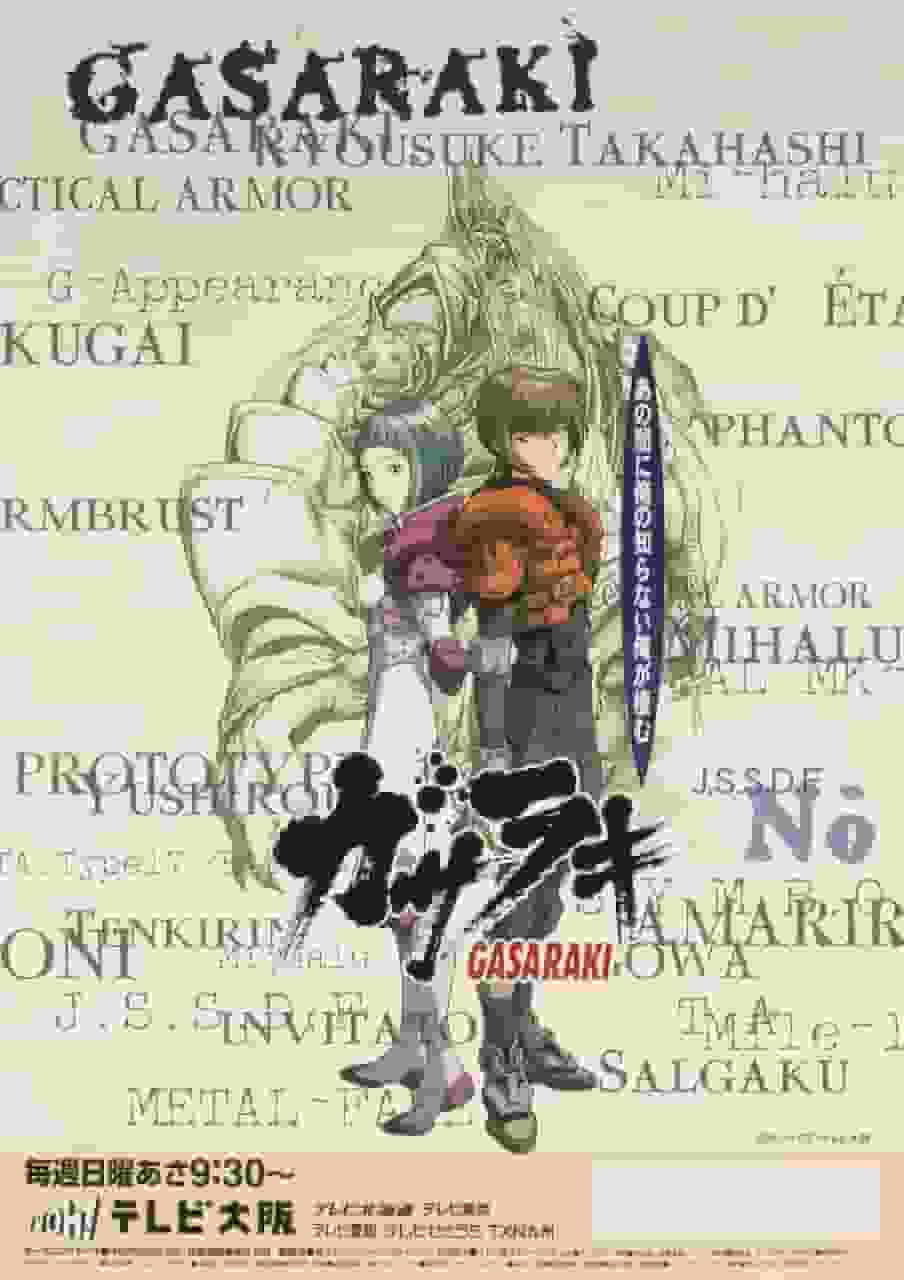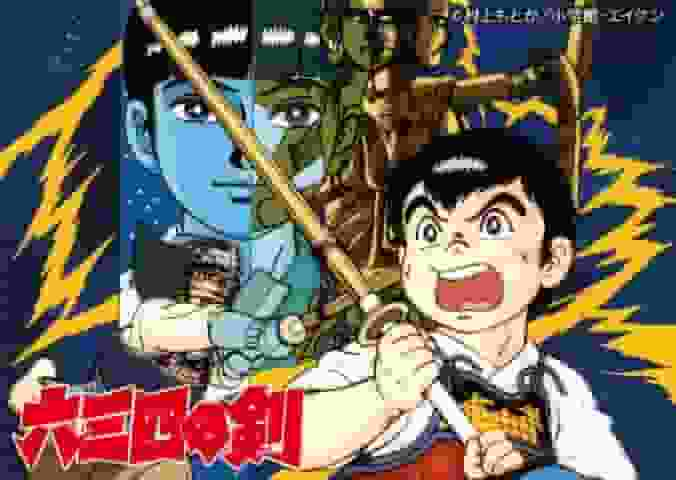The appeal and evaluation of Gasaraki: A deep look into the fusion of mecha and drama

Gasaraki - A deep fusion of story and mechanicsThe TV anime series "Gasaraki", which aired from 1998 to 1999, captivated many fans with its unique worldview and profound storyline. Produced by Sunrise, the work was created by Hajime Yatate and Ryosuke Takahashi, and is known for being directed by Ryosuke Takahashi. It aired from October 4, 1998 to March 28, 1999, with a total of 26 episodes. It was available to watch on OTV every Sunday from 9:30 for 30 minutes. Story and ThemesThe story of "Gasaraki" tells the story of a young man named Gowa Yushiro. He is the heir to the Gowa financial conglomerate, and while he carries the expectations of his family, he must also face his own destiny. Through the robots "Takuma" and "Gasaraki" that Yushiro pilots, the story depicts family secrets and the fusion of traditional Japanese Shintoism and science and technology. The work covers a wide range of themes, but the most notable is the relationship between "fate" and "family." As the head of the Gowa financial conglomerate, Yushiro's family becomes embroiled in various conspiracies and secrets. In the midst of this, Yushiro sets out on a journey to rediscover the meaning of his existence and his ties with his family. Shinto elements are also deeply embedded in the story, depicting how science and technology coexist and conflict with traditional beliefs. characterGowa Yushiro (voice: Nobuyuki Hiyama) is the central character of the story. He is expected to be the next head of the Gowa financial group, but he chooses to pilot "Takuma" to escape the pressure. Yushiro's growth and suffering are the axis of the story. Miharu (voice: Kanetsuki Mami) is Yushiro's childhood friend and an important presence who supports him. She supports Yushiro emotionally and has a great influence on the progress of the story. Gowa Misuzu (voice: Korogi Satomi) is Yushiro's younger sister and is deeply involved in the family's secret. Her presence also greatly influences Yushiro's fate. Many other characters related to the Gouwa family also appear, including Ataka Rin (voiced by Takayama Minami), Murai Sao (voiced by Tange Sakura), Gouwa Kazukiyo (voiced by Takada Yuji), Gouwa Kiyotsugu (voiced by Hayami Shou) and Gouwa Kiyoharu (voiced by Chiba Kazunobu), each of whom adds depth to the story. Mechanics and designThe mechanical design of "Gasaraki" was handled by Izubuchi Yutaka and Aramaki Shinji. "Takuma" and "Gasaraki" created by them captivated viewers with their realistic design and movements. "Takuma" is particularly impressive as it evolves along with Yushiro's growth. "Gasaraki" also plays an important role in the second half of the story, and its design and performance greatly influence the development of the story. Character design is handled by Shukou Murase, and the designs are distinctive in that they highlight the individuality of each character. Yushiro's facial expressions and movements in particular visually express his inner conflict. The designs of Miharu and Misuzu also match the atmosphere of the story. Subtitles and episodesEach episode of "Gasaraki" has a unique subtitle. Below are the subtitles for all 26 episodes.
Each episode depicts Yushiro's growth, his family secrets, and the evolution of his mechanics. The later episodes, in particular, delve deeper into the themes of the story, leaving a strong impression on the viewer. Production and staff"Gasaraki" was a joint production between Sunrise, Yomiko Advertising, and OTV. The story was written and directed by Ryosuke Takahashi, and the series was composed by Toru Nozaki. Character design was by Shukou Murase, and mecha design was by Yutaka Izubuchi and Shinji Aramaki, showcasing Sunrise's high level of production technique throughout the series. The copyright is owned by Sunrise and TV Osaka, and is an important factor supporting the quality of the work and its unique worldview. Evaluation and impact"Gasaraki" was highly praised for its unique storyline and realistic mechanical design. In particular, the theme of the fusion of science and technology with traditional beliefs deeply touched viewers. In addition, the storyline depicting Yushiro's growth and his family's secrets was well received by many fans. This work is often compared to other Sunrise works, among which "Gasaraki" has established a unique position. In particular, the realism of the mechanical design and the depth of the story are highly regarded as charms that other works do not have. Recommendations and related worksIf you enjoyed "Gasaraki," we also recommend the following works:
Just like "Gasaraki," these works also have profound themes and realistic mechanical designs that you can enjoy. Please give them a watch. Conclusion"Gasaraki" is a profound story that depicts the fusion of science and technology with traditional beliefs, and the conflict between family secrets and destiny. Yushiro's growth and the evolution of the mechanics are the axis of the story, leaving a strong impression on viewers. This work, which combines Sunrise's high production technology and unique worldview, continues to be loved by many fans. Please watch it and experience its charm for yourself. |
<<: The appeal and evaluation of "Popolocrois Story": A monumental fantasy RPG
>>: The appeal and evaluation of Sorcerous Stabber Orphen: A deep review
Recommend
Trigger Club's new film "Gurlitt Universe" trailer will be released on March 24, 2023
The completely new movie "Gridman Universe&q...
"Baby": A fusion of moving stories and music that everyone can learn from.
The appeal and evaluation of " Baby Songs fo...
Liu Cixin responds to the phone call to the Trisolarans: Ye Wenjie is absolutely unforgivable
According to Fast Technology on February 6, if yo...
HBO Max launches Adventure Time spin-off starring female Finn and Jake
According to the famous film and television media...
The second phase of Bleach: Thousand Years of Blood War will be released in July next year
Yesterday, the last episode of the first phase of...
"White Snake: Floating Life" new trailer released
Recently, the first feature trailer of the third ...
Confucius Review: An anime experience where ancient wisdom meets modern perspective
"The Life of Confucius" - A one-night-o...
The new animation of "Macross" is confirmed to be produced and a new singing girl audition will be held
The classic anime "Macross" has become ...
X-Men: First Class director says Deadpool 3 can save the MCU
The highly anticipated superhero comedy film &quo...
Warner Bros. to film new Constantine movie, Colin Farrell is first choice
According to foreign media We Got Discovered, War...
Netizens interpret the mysterious railway poster on EVA's official website, pointing to the real main plot of the final theater version
The latest work in the series, "Neon Genesis...
Hamtaro 1: New series unaired works reviews and impressions
Detailed review and recommendations of unaired wo...
It is said that "Avengers 4" is more than 3 hours long. Don't drink too much water before watching the movie
With Endgame set to hit theaters next month, ther...
Atelier Ryza: Ever Darkness & the Secret Hideout review: Captivating story and character depth
Atelier Ryza: The Queen of Eternal Darkness and t...
Review of "Sora no Momotaro": A new adventure and a moving story
All-round review and recommendation of Momotaro i...









